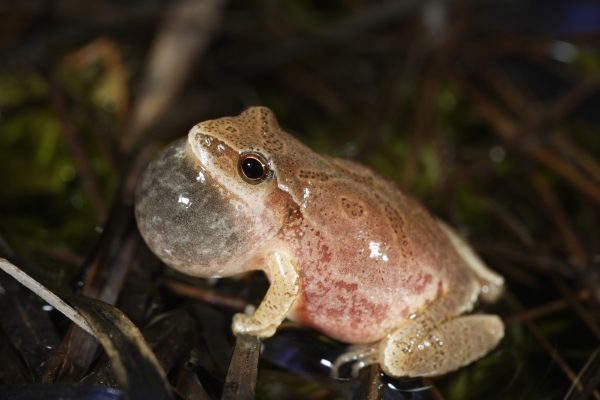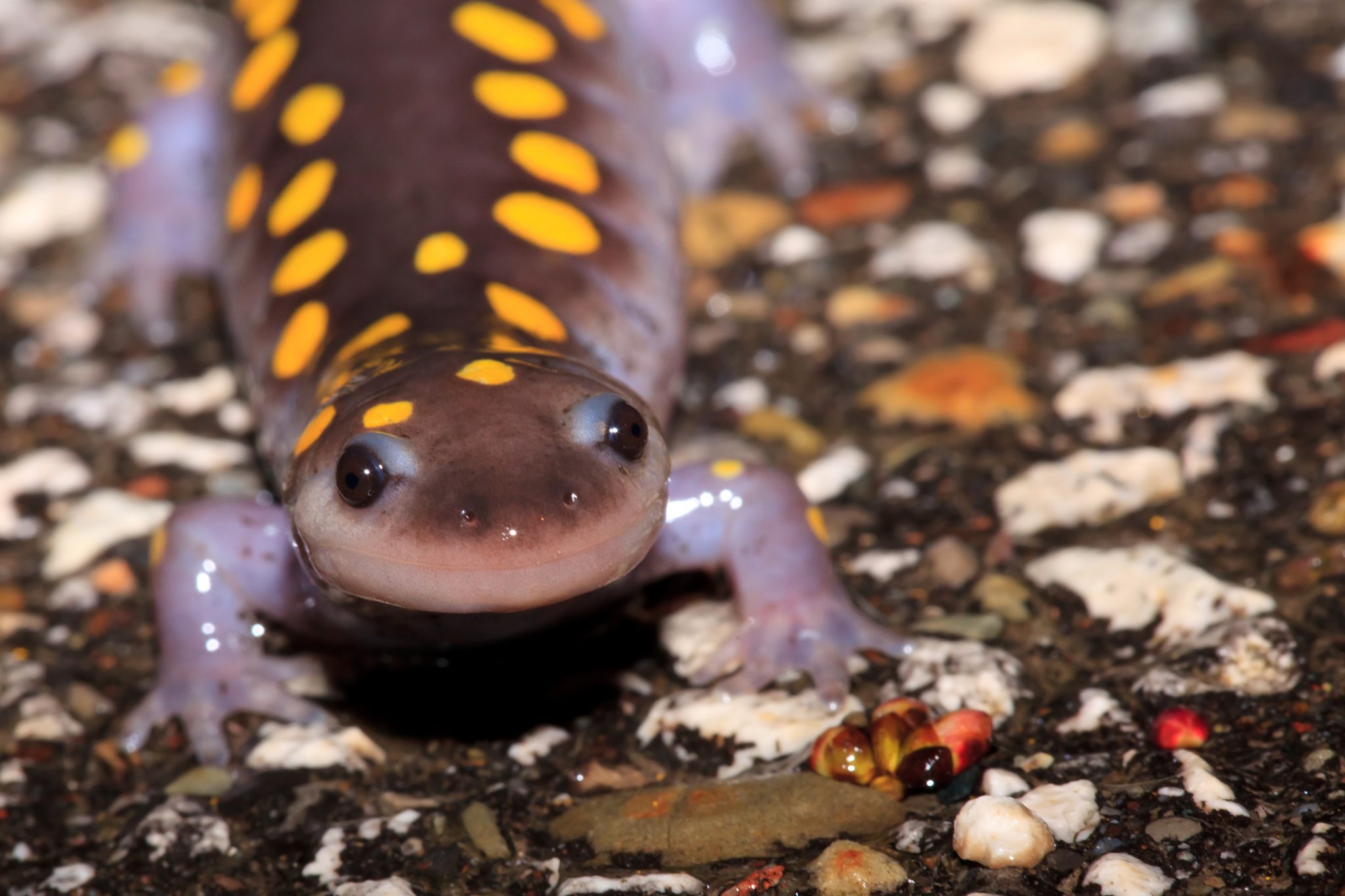Forestry & Wildlife

Although winter means that snakes and other reptiles become much harder to find, the same is not true about Alabama’s amphibians.
The sound of frogs calling may bring to mind summer nights, but many of the state’s frogs actually call and breed during the winter. In fact, oftentimes the frog species heard during winter will rarely, if ever, be heard during summer and vice versa. This is also true about Alabama’s other group of amphibians – the salamanders. For some species, it is much more likely to catch a glimpse of one on a rainy winter night than it is on a summer day.
Frogs
 Just like birds, frog species have a unique call that distinguishes them from their relatives. Also much like birds, oftentimes frogs are heard but not seen. In fact, scientists often assess frog populations solely by listening to their calls.
Just like birds, frog species have a unique call that distinguishes them from their relatives. Also much like birds, oftentimes frogs are heard but not seen. In fact, scientists often assess frog populations solely by listening to their calls.
So, which frogs should people keep an ear out for during the winter? Those frogs fall into three main groups, chorus frogs, true frogs, and true toads.
Chorus frogs. These are a type of tree frog, but mostly live on the ground. They are small frogs that tend to only measure between 1 and 1.5 inches in length. There are six species throughout the state, but the two with the widest distribution are the spring peeper and the upland chorus frog. The name spring peeper is not completely a misnomer because they will call during the spring, as well, but in Alabama they may start calling as early as December. The peeper part of their name is appropriate because their call really does sound like a high-pitched peep. The call of the upland chorus frog, on the other hand, has been described as someone running their fingers along the teeth of a plastic comb.
True frogs. These frogs are the stereotypical pond frog and include well-known species such as the bullfrog. The bullfrog, however, is not a winter breeder, but the southern leopard frog is. Of Alabama’s winter-breeding true frogs, the southern leopard frog has the widest distribution in the state. Their name comes from their appearance, which includes dark spots across their backs. Their call can be described as a guttural croak and has been compared to rubbing a finger on the side of a balloon. They also make a chuckling sound.
True toads. Although there are four native toad species in the state, the only winter breeder is the American toad. Squatty and covered in warts, this species is a familiar sight to many Alabamians. Their call, however, is probably less recognizable to many. This species gives off a trilling bu-r-r-r-r sound that may last up to 30 seconds. Some might mistake it for an insect, but, once identified to its rightful owner, the call is unmistakable.
Salamanders
Mole salamanders. These are the group of salamanders most frequently associated with winter migrations and breeding. Migrations to breeding pools occur primarily on rainy nights. The name mole salamander comes from the fact that outside the breeding season these species spend most of their lives underground. Of the six species in the state, five are wintertime breeders, with the marbled salamander being the lone exception. These include the tiger salamander and the reticulated flatwoods salamander. The tiger salamander is the largest terrestrial salamander in the United States, while the flatwoods salamander is rare and listed under the Endangered Species Act as threatened.
Spotted salamanders. The most common species is the spotted salamander. The spotted salamander is a large species of salamander, measuring between 6 and 9.5 inches in length. Their coloration is dark brown-to-black with yellow to orange spots on their back and sides. Because they are inactive underground outside of the breeding season, spotted salamanders can live over 20 years. Spotted salamanders rely on vernal pools and other fishless, temporary waterbodies for reproduction. Rainy winter nights in Alabama are the best chance to see this amazing animal, as they migrate to these pools oftentimes crossing roads to do so. In fact, the organization Friends of Shades Creek hosts an annual salamander festival outside of Birmingham to celebrate this natural phenomenon.
Be An Amphibian Ally
There are several easy steps that can be taken to ensure these amphibians remain around for future generations.
- Slow down. When driving on rainy winter nights slow down, especially on rural routes. Spotted salamanders and other amphibians often cross roads after dark as they migrate to their breeding pools. Unfortunately, many end up as roadkill.
- Create farm ponds elsewhere. Seasonal wetlands are incredibly important for amphibians to survive and reproduce. Instead of converting a seasonal wetland into a farm pond, opt to retain the seasonal wetland and create the farm pond elsewhere.
- Limit run-off. Avoid diverting surface run-off into seasonal wetlands. The pollutants from roads and elsewhere can be detrimental to the amphibians that depend on them.
- Minimize logging near vernal pools. If possible, minimize or avoid logging in the immediate vicinity of vernal pools and other seasonal wetlands. Soil disturbance and compaction from machinery can damage these important habitats.
For more information, contact Wes Anderson, an Extension forestry, wildlife, and natural resources specialist.

